A Poem by Lisa Olstein
by Mark Bibbins, Editor
All These Constellations Are Yours
The ship dreams in terms of water.
Beautiful volume, the world stretches out.
Distant sails look like homing pigeons
whose wings once shown blue.
Little by little we take into our lungs
an echo. This is a way of saying
we do not see it start, yet it always starts
in the houses of the past, in the space of elsewhere.
We dream over a map, desire describing
a nation, a desert, the plain or the plateau,
the horizon as much as the center.
In the domain under consideration,
there are no young forests. Honey
in a hive is anything: white nettle,
blue sky. Space starts to dream
in the animal machine. Look in the eyes
of a trembling hare. The instant when
an animal that is all fear becomes lamb-like
calm is a proof: every atlas an absolute
elsewhere, the non-I woods,
the before-us forest.
Lisa Olstein is the author of three books of poems, most recently Little Stranger (Copper Canyon Press, 2013). She teaches in the MFA program at the University of Texas at Austin.
You will find more poems here. You may contact the editor at poems@theawl.com.
Thoughts That Run Through Your Mind While You're Stuck In A Subway Tunnel For Over An Hour
by Chelsee Pengal
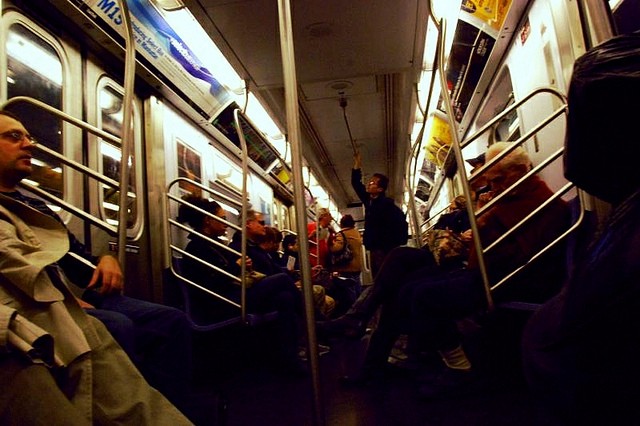
April 6, 2015, 7 train to Grand Central, 8:37am
Whoa, that seemed like a sudden stop.
Was that the emergency brake?
Hey random passenger: Thanks, we know it’s the emergency brake.
Smells like smoke.
Hey same random passenger: Yeah, we know there’s smoke.
Where’s the smoke coming from?
Am I safer in the train or outside of it?
This tunnel is super narrow and there’s nowhere to escape to even if we do have to leave the car.
Hey MTA announcer: Don’t you know calling it a “smoke condition” doesn’t make it sound less scary?
What if we have to stay on this train for hours? Will people pee in their Starbucks cups?
Am I going to die in a subway tunnel?
Is this smoke condition serious?
I don’t want to die in a subway tunnel.
Of course I’m going to die right after the first good first date I’ve had in months.
Would someone give me their Starbucks cup to pee in if I asked nicely?
Hey MTA announcer: you already told us you’re investigating the smoke condition. What I need to know is whether I should be panicking.
If this really is a life-or-death situation, will I feel foolish for not letting myself fully panic? Or will I not care either way since I’ll be dead?
Should I write a text that says, “I love you all,” so my family will know I was thinking about them when I died?
My mom’s going to be pretty mad if I die in a subway tunnel.
No one else seems to be panicking.
Maybe this isn’t that serious.
Is “when there’s smoke, there’s fire” scientifically accurate?
What if someone other than my family finds the “I love you all” text and mistakenly thinks it means I love everyone in the world?
Hey MTA announcer: you can stop announcing things until you actually know something.
Why would the possibility of being mistakenly remembered as someone who loved all of humankind bother me?
It figures this happens on the day I was going to be on time to work.
The East River could actually burst into this tunnel right now.
Well, at least the guy in charge finally made it to our car.
If the East River burst into this tunnel right now, could we somehow swim out of it?
Oh good, from this last car we can hear them on their walkie-talkies.
Maybe it’s better not to hear this.
How many people could I drag with me if I had to swim out of a subway tunnel?
This woman and I ride the same 7 train at least 3 times a week, and I don’t know anything about her except she’s engaged and must have a long walk to work or else why would she be wearing those sneakers?
Ooh, another announcement — they wouldn’t bother announcing it if we were going to die, would they?
I could at least grab that scrawny guy right there on my way out.
Phew, I’m not going to die in a subway tunnel…today, anyway.
Good thing I didn’t drink any water before I left my apartment this morning.
Hey MTA announcer: you don’t need to tell us 3 times in a row that we’re going to be stalled until they either figure out how to fix what’s wrong or send a rescue train. No one new has gotten on since your last announcement.
Guess I’ll sit down now that I don’t have to prepare for quickly jumping off the train to run or swim for my life.
If I’d remembered to bring my book club book, I could probably finish it now. Instead I have to read what’s on my kindle app: this weird Murakami book.
How long will it be before people at work wonder where I am?
That art print I saw called Haruki Murakami Bingo truly was representative of every. Single. One. Of his books.
Why is that woman sighing and rolling her eyes? Even I know all you can do in this situation is be patient, and I’m like the least patient person in the world.
At least nothing I brought for lunch today will go bad outside of the refrigerator for 2 hours.
Hey guy next to me: I know I’m not allowed to say anything because we all just went through a potentially-but-not-severely traumatic experience, but can you please stop accidentally tapping me with your foot?
I wish I could just write over and over about cats and crazy dreams and crazy sex and get paid for it.
Why isn’t anyone making jokes to lighten the mood?
Hey fellow passengers: how come when I made the joke about the MTA guy saying they “might” send a rescue train, none of you laughed, but then when the girl on the other side of the car made the exact same joke, the people around her found it hilarious?
How many articles about this situation are currently being posted on Gothamist?
Being evacuated from a subway train is sort of okay once you know you’re not dying — I can write about it on my blog, anyway.
Does anyone at work even notice I’m not there?
It’s sad they have to actually tell everyone to put their cell phones away so they don’t drop them while evacuating the train.
I guess I’ll put my cell phone away.
How many cars does this train have? I feel like we’ve been walking through them for days.
The pictures people are getting of the backs of passengers’ heads aren’t very good.
If I were this guy behind me, I’d be really mad I had to walk all this way with a cane.
Hey guy behind me: It makes me happy that you say thanks every single time I hold each car door open for you.
Should I try to take a picture for Instagram?
Okay, time for the main event: getting onto the rescue train.
Fine, I won’t take a picture. Wouldn’t want to risk dropping an iPhone4.
Turns out evacuating to a rescue train is exactly like stepping between cars.
Hey women across from me who have met and formed a friendship in their time stuck on the train: Aww, that’s really sweet. Such bad timing to find out one of you is moving to Florida next month.
Alright, everyone’s on. We can move.
So now we’re just going to sit on the rescue train for hours?
Why is this train inching along? It’s impossible for there to be any train traffic ahead of us.
Probably no one at work even realizes I’m 2 hours late.
Hey firefighter: this is no time for jokes. We just want to get off this train.
I’m off the train!
I’m alive!
Hey firefighter: Thank you for the jokes.
Photo by Faungg
Attend the 3D Printshow in NYC, April 16-19
by Awl Sponsors
Next week, the world’s leading event for creative future-tech, 3D Printshow, returns to NYC for the second year running, showcasing the hottest tech and the latest innovations in the world of 3D printing and design.
If we’re to believe everything that we read online, you can 3D print cars, planes, robots, 3D-printers-that-print-other-3D-printers (I’m envisaging a Terminator 2-type doomsday scenario, but with a lot more plastic), pretty much anything.
Oh, and if we give credence to Will-I.am’s recent comments, we’ll be 3D printing entire human beings within his lifetime. I’m guessing he’ll probably do it on the holodeck of his nanotech-microbot-trans-warp-drive-powered-black-eyed-pea-scooter sometime within the next 2 months. Or not at all. Ever.
3D printing has suffered from a lot of hype, which seems to be detracting from the incredible things you can actually do with it right now.
Just as the smartphone, and indeed the internet before it, opened up entire new worlds of creativity, commerce and productivity (or time-wasting and perpetual work, depending on how you see it), 3D printing promises to change our world.
That sounds like a huge promise — as though it could make the world unrecognizable from the one that we now know. Is that level of change even possible through one technology? I believe it is.
For many of us it will change the way things are done on a fundamental level. It will open up a world of possibilities and enable a speed of creativity that’s most easily compared to the email vs. snail mail model (I mean how the hell did anyone get anything done when information took at least a day to travel in either direction??)
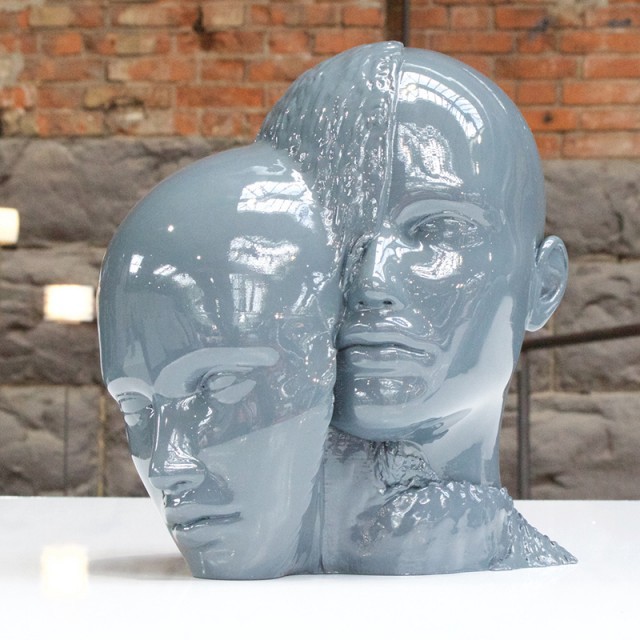
It will also spawn entire scenes, communities and business arenas that never existed before — that couldn’t have existed before.
3D Hubs is a good example — a community network of 3D printers that within two years has built up over 13,000 printers connecting one billion people within 10km of a 3D printer — that’s one for every seven people on the planet. If you need a print done, check on the website — they’ll connect you to your nearest 3D printer-owner and facilitate the file exchange. Pick up your print or have it posted. A new paradigm is born — a perfect system of distributed manufacturing.
It’s obvious that 3D printing is powerful and will generate change that cannot be undone, but we’re in an exciting phase where the lines aren’t clearly defined.
As new tech flourishes, the shape of how we fill the hours between waking and sleeping evolves. Future-gazers may have predicted the pocket computer (smartphone), but could anyone have foreseen the age / race / language / creed-spanning popularity of Angry Birds? Or the reporting of our every movement that so many people volunteer onto social media platforms?
3D printing may well change the world — it’s just not obvious yet what that change will look like. Everyone’s predictions are based on a curve that moves from the past, through today and maintains some sort of predictable trajectory.
But it doesn’t always work like that.
From the Beatles to the computer, cars to the internet, early signs were that they’d ‘never catch on’. Each did, and has reshaped the world that we live in today. Never mind food and shelter, Wi-Fi is considered a human right in certain circles.
How quickly the baseline moves up.
Just like the Beatles, 3D printing is starting to get ‘famous’ around the world. Need proof that 3D printing is going mainstream? Check out Disney’s latest animated feature, ‘Big Hero 6’. When the team of heroes need new armor, 3D scanning and 3D printing are, it would seem, the go-to tools for the creator of the near-future. I even spotted a 3D printer in Iron Man 3. Pop culture is starting to pick up on this stuff.
If all of this peaks your curiosity, 3D Printshow offers 3D-scanned selfies, insane bio/futurist art, a taste of 3D printed chocolate (Spoiler alert: It tastes like… Chocolate) and the (mildly hypnotic) sight of these machines building objects layer-by-layer. There is much for the creative New Yorker to marvel at.
For those with a head for business or a strong creative itch, the show’s conference series offers fast-track insight and advice across a range of 3D print topics, including investment, medical, newcomer, fashion and art.
Buy tickets to the 3D Printshow here.
Goodbye, Time Warner Cable
by Eric Spiegelman
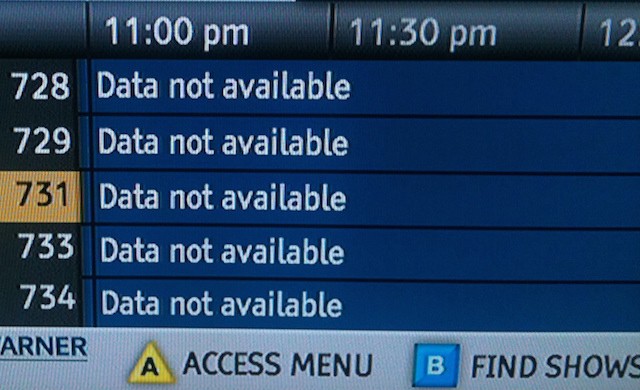
We’ve been through a lot together these past twelve years. Remember when I moved to Silver Lake? You came with me! You even replaced my outdated cable box as a housewarming gift. Sure, you continued to charge me $4 a month in “rent” for that old box that you kept, for the next 57 months. But it was a lovely gesture.
I remember all those long nights waiting on hold, trying to get you to stop charging me for the old cable box, only to get a customer service rep who thought I was the one who was lying. Maybe it’s that we’re too much alike. I’m a stubborn person as well. I like doing things the way I’ve always done them. You know how you’ve stuck with the same garbage menu interface since at least 2003? I still have the same coffee machine from back then! Who needs a Keurig or a navigable UI, anyway?
We’ve had our share of arguments, but they kept us intertwined in that special way only a toxic cycle of invented drama can. Like the time I caught you charging new subscribers half the rate you charged me for the same service. We had a chat about that, didn’t we. You told me, with a straight face, that the plan I had was a “better deal,” because I guess you don’t think I understand how numbers work? You said if I wanted the new rate I’d have to cancel my service altogether and then come back a month, if that rate was even still offered by then. So unnecessary. So hurtful. I’m happy to say I’m finally taking your recommendation. The first part, at least.
Truth is, you’re a little mercurial for my taste. You change your channel lineup all the time, with no warning or notice, screwing up my DVR settings. I missed episode 10 of the first season of You’re The Worst the last time you did this. That’s the episode where Kether Donahue sings Kate Bush at karaoke. I had to just sit there and pretend to agree while all my friends went on about how episode 10 was the best one. It was so mortifying. I still haven’t seen it!
Maybe you didn’t realize this, but since you last switched up the lineup, there’s now two of everything. Two AMCs, two FXs (not including FXX), two IFCs. And not even an east coast feed and west coast feed. Two west coast feeds. I can’t make sense of this. Whatever the reason, it’s kind of rude. A lot of people try to launch little upstart cable channels and you totally ignore them, while clearly you have plenty of bandwidth to go around. I don’t need two identical Bravos. Trade one, maybe, for Pivot.
There are two SportsNet LAs as well, but this is hardly the problem with that whole debacle. The real problem is that you’re a bully. 70% of Los Angeles can’t watch Dodger games on television because you won’t let other cable systems carry them for less than $4 per subscriber. $4 is more than the carriage fees of AMC, FX, IFC and Comedy Central, combined, so that’s not really a fair price, is it? Maybe you can show Comcast how to run that whole “charging for old cable boxes” scam and get them to assign those $4 fees to you. There’s an idea!
By the way, not a single person in Los Angeles knows what channel number SportsNet LA is. I spend at least ten minutes looking it up every time I want to watch the Dodgers. Nearly missed the ninth inning of Beckett’s no-hitter because of that. You know how I know that NBC is on channel 4? Because every one of their billboards and station identification bumpers has said so since the beginning of time. You might want to try that marketing strategy. Though, “SportsNet LA: now on 68 and 318 and probably some new number in a couple months” doesn’t quite roll off the tongue.
It’s not just me who’s upset. You’ve so thoroughly alienated my neighbors that the second largest newspaper in Los Angeles is now teaching people how to use a proxy server so they can stream Dodger games via MLB.tv. That probably violates the DMCA, but so what? We’d rather break the law than let you continue to break our hearts. Oh, and I’ve met someone else. It’s Apple. As of last Tuesday they offer HBO NOW on their television system. Apple cares about my needs.
There’s really nothing else keeping me here. The only shows I watch that I can’t get on subscription streaming now are Mad Men, You’re the Worst, Portlandia and Louie. I’ll be fine buying individual episodes on iTunes. Adding those charges to my HBO NOW and my proxy-servered MLB.tv, I’ll still cut my television costs in half. I already did the math. You waste my money. You waste my time. You make bad decisions. We’re over.
I still have your cable box. I’ll leave it outside and you can send someone to pick it up. Don’t bother knocking. It’s time for both of us to move on.
Photo by Dens
Uglying Up Continues
Depending on how you’re scoring, the reconstruction of Astor Place is “progressing noticeably” or “seems to have stalled,” but, either way, the city’s million dollar plan to ensure that the Sculpture for Living is no longer the ugliest part of the area around Cooper Square cannot be considered anything less than a success.
New York City, April 7, 2015
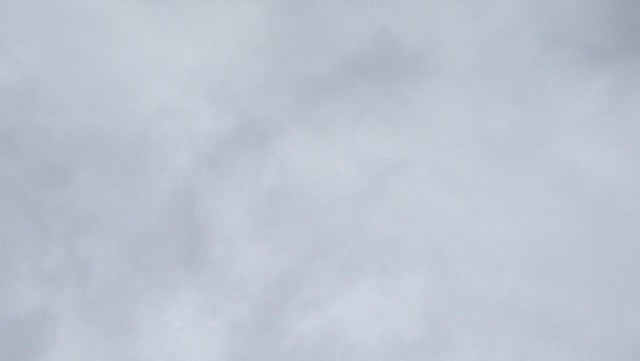
★★ There were minor variations in the gray of the sky, while the gray of the river was as flat as a puddle of spilled institutional paint. A few raindrops fell purposelessly, and then the wind seemed to organize them as it gusted. By late day there was full rain, crackling on the trash bags and pocking against the hood of the rain jacket. In the span of a literary event it subsided, leaving the usual shiny streets and slishing tires. A big rat wandered calmly along subway the platform, on the yellow warning strip, trailed the shining light of someone’s phone camera. A young man on a bench rocked back and slapped his feet down when the rat ventured in his direction, which made it stop but not retreat. Uptown it was raining again and the wind was blowing. Breath steamed.
"I Am Famous For It Now"
by Marie Solis
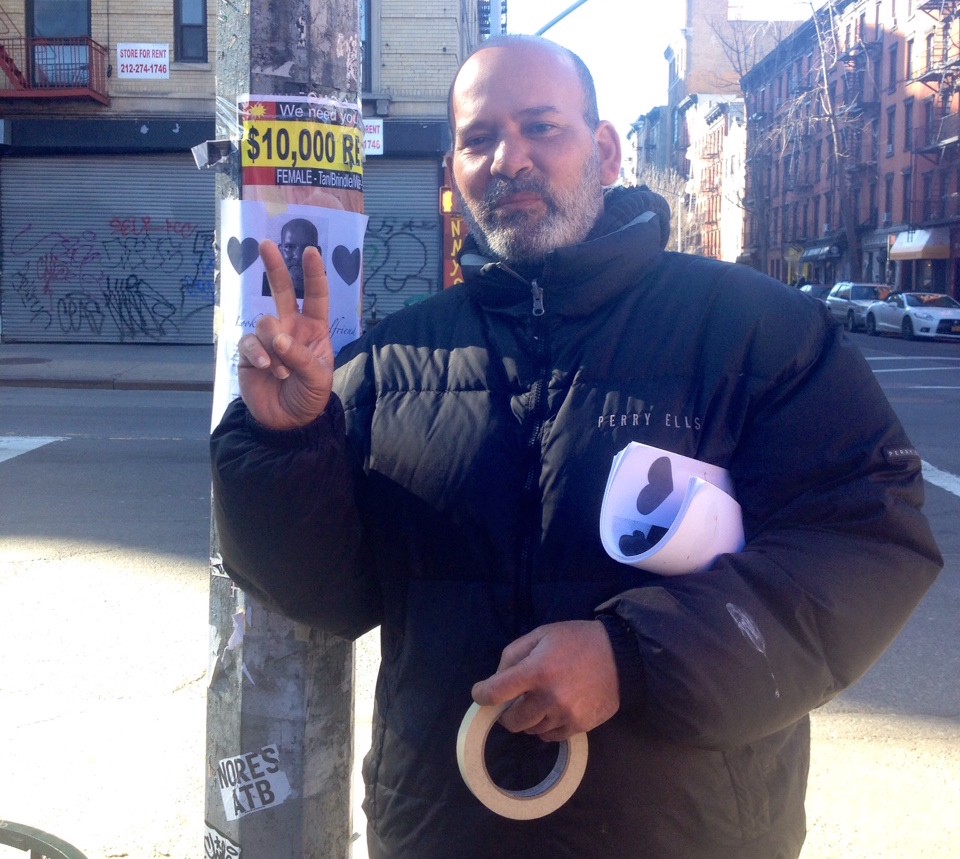
One afternoon in August, I was sitting at the long table along the perimeter of the New York Observer’s newsroom, where all of the interns lived. Returning from lunch, my editor placed a flyer in front of me. “I want you to call this guy,” she said. The piece of eight-by-eleven computer paper read, “I’m really looking for a girlfriend. This is not a joke. Just tired of the singles scene and hoping to meet the right person. I am a professional and a creative person. You know who you are. To me each and every person is beautiful. Open to the possibility of the relationship morphing into something more profound.” Hovering above this declaration were the words “Looking for a girlfriend,” and a headshot.
The headshot belonged to Dan Perino, a middle-aged man living in the East Village. I interviewed him twice that day — the second time after 6 p.m., so I had missed my usual train home. There I was, the last intern at the long table, listening to Perino tell me — three days away from turning twenty-one — that he, fifty-one years old, was looking for a woman in her twenties or thirties; he wanted to start a family. He told me that he was putting up fifteen hundred flyers a day, in nine-hour shifts, and that he had gone on thirty-nine dates in sixteen days. The endeavor was to be a month-long experiment, during which he would abstain from sex and focus on finding lasting romance.
While we spoke, I stared at the flyer, which I had affixed to the wall in front of my work station. Perino looked pretty average: He was balding with a five o-clock shadow, his expression giving away only the faintest hint of a smile. His eyes were a little unnerving — there was something piercing and demanding about them, but also something that seemed to be missing.
“I don’t want to get stuck on the internet looking for a girlfriend,” he said. “This is new. No one’s ever done it before.” He was pleased with himself — and maybe even more pleased that I was giving him additional press coverage; he said his phone was ringing off the hook with calls from reporters. After our conversation, I left the office and took a later train home, imagining his gaze penetrating the emptiness of the newsroom.
As I dozed off during my morning commute the next day, I was awakened by two texts from Perino. He wanted to know when the story would be in print. After another hour, I arrived at the office, and wrote the piece; I was happy with the finished product. When my internship ended two days later, I forgot about Perino.
But he hadn’t given up on his mission. Since the Observer published my piece, Perino has hung fifty thousand flyers (printed at a shop in the West Village for a reduced price of ten cents each); has answered nine thousand phone calls; been on hundreds of first dates; hooked up with a hundred and twenty-five women (now a hundred and thirty-seven); and has been featured in publications around the world.
On November 9th, months after we had last spoken, Perino texted me: “I am looking to do a reality tv show,” he wrote. “I am famous for it now Google my name Perino perino. Or maybe you can lead me in the right direction? Thank you. Perino.” On November 17th came another message. Perino, apparently, had found some success. “They are doing a documentary on me. And they also want me to do a pilot for a reality show. Vice.com gave me a lot of publicity. From Dan perino looking for a girlfriend flyer.”
I ignored these until one day I was reminded of Jeff Ragsdale, commonly known as “Jeff, One Lonely Guy.” In 2011, Ragsdale hung posters around New York City, offering his phone number to the masses if “anyone wanted[ed] to talk about anything.” Every day, Ragsdale received hundreds of calls and texts from people around the world and later compiled these into an eponymous book. You could say that Perino is his pupil: Both lonely, but in different ways. I suddenly wondered what Perino was up to — if he was still answering phone calls, still hanging flyers, still going on dead-end first dates.
I excavated the transcriptions of my interviews with Perino and took to the web. In recent months, Perino had begun to embrace the digital age; I browsed his Twitter, Instagram, personal website and Indiegogo webpage. Perino had abandoned his pursuit of love for a pursuit of fame.

A photo posted by Dan Perino (@lookingforagirlfriendguy) on Apr 5, 2015 at 8:34am PDT
“You’re from the camera crew? Okay,” I heard Perino say to someone in the background when I called him one afternoon in February. “Things are starting to happen now. Usually I get three calls a day from reporters,” he said. Most of it is overseas. I did something for Australia yesterday. I did something for Africa.”
He continued, “I did another interview for a tabloid in England. I did a couple of dating tips for someone out west. I did a couple of dating shows. I did one in Alaska. It goes on and on. It’s never really the same story. Things change by the day or by the week for me. I’m probably going to change this flyer and now do a world-wide search.”
Perino’s documentary had finished filming and was now on the editors’ desk, he reported, but he still desperately wanted to shoot a reality show. However, his Indiegogo campaign hadn’t attracted any sponsors. Perino seemed to be taking advantage of social media and even dating apps, the very technologies he reviled in our summer interviews, but some of that mistrust still stuck.
“I’ve tried Tinder, it’s fake,” he bemoaned over the phone. “Tinder comes and says you have to pay twenty-five dollars to pay for the really hot girls and then in the middle of texting they’ll say you’ve reached your coin limit. I got my money back from both that and OkCupid. It’s fake.” He then recounted all of the “fake” women he has met on these deceiving apps: women who wanted a plane ticket to see him, a woman who wanted gas money to travel from California, a woman who wanted his opinion on the lingerie she had just bought but then never responded. And a transgender woman who “tricked” him was the fakest of them all, according to Perino. “The flyer is not fake,” he countered. “I’m truly looking for a girlfriend.”
One morning, a few days after this conversation, I rolled over in bed, feeling blindly for my phone amid the sheets. With eyes barely opened, I checked my Twitter to see that New York magazine had written a story on Perino. I gave it a read and then browsed Perino’s latest tweets: He said he was slated to speak to twenty reporters that week. Great, I thought. My phone interview wasn’t going to cut it. I texted Perino and he said that we could meet up — in fact, I could accompany him on his daily flyer route, which is no longer just a mission: Perino gets paid to hang other people’s flyers, which he often does so while hanging his own. “I’m an expert flyer-hanger,” he boasted.
Perino suggested that we first sit down at SideWalk Café in the East Village, one of his favorite haunts. When I entered, I recognized it from the photo accompanying his Vice interview. (In it, he recounted his “weirdest date ever,” when a woman invited him to her hotel room and passed out from drinking too much. He then helped her to bed, “felt her up a little bit” and then left.) I said “hello” to the waitress, feeling bad for a moment that I was only there to conduct business, not to order anything. The only other two people there seemed to be doing the same, with one woman talking on a headset and another typing on a laptop. Perino was already there, looking just like his photo and sipping a cup of coffee. Beside him sat a stack of flyers with heart clipart. “I think they’re more romantic,” he had told me earlier on the phone. They no longer include Perino’s phone number. I shook his hand and sat down. “Look at my hands,” he said, holding them up. “They’re all cut-up from hanging flyers.” He had been posting them all winter. With the wind and cold, paper cuts abounded. As I pressed record on my phone, he requested, “Don’t give me a bad article.”
Forgetting that the last time we had spoken was just two weeks ago, Perino rehashed much of what he said before. He told me again about the documentary, the fake dating apps, the fake women, all in his low, even voice that was now familiar to me. I asked him only a few questions, which he more or less answered before going off on various tangents. I inquired about a girl he had mentioned a few days before our sitdown. In a text, he had written, “I have to ask this girl I met if she wants to talk. She may be the end of my search.”
Perino was fidgety, but unblinking, speaking as though he were reading from a script. “I was thinking I might actually turn her into my girlfriend,” he said. “She sent me pictures and said she had three months until she became a doctor. I forget where she lived…Minnesota maybe? So we’re talking, talking, talking through text, Facebook text — Facebook messaging. Then she hits me with this six-hundred-dollar chemistry book she needs.” That was the end of their interactions.
Other women, Perino said, had asked him to wire them money, pay for their cell phone bills, even purchase them a three-thousand-dollar bicycle. They wanted a sugar daddy it seemed, but — in case for a moment I had forgotten — Perino wanted a girlfriend. No matter what I asked him — is shooting a reality show your end goal? Is shooting a commercial for a dating app your end goal? — he was unflagging in his response: “No, I’m looking for a girlfriend.”
The way to a woman’s heart, he maintained, was not through material things. “Men shouldn’t buy women gifts until they know them for quite a while. But I do bring a red rose on every date, every single one. Which has been a lot of red roses.” He paused for a moment. “Two bucks each.” I didn’t get a rose, because I had asked for an interview, not a date, though Perino insisted there wasn’t much difference between the two. “Men do all the talking; women do all the listening, like you’re doing now. Let’s say, I was talking to you on a date and you had your red rose…” He took another long pause. “Women interview men all the time to see if they’re smart enough, strong enough, cool enough, fun enough, to go to the next level. It’s nature.”
Men want alot out of life fishing, getting laid, a nice car and a family. Girls only want fashion and a guy hung like a 9in coke can. ME
— daniel perino (@danperinonyc) April 9, 2015
Perino constantly speaks in these kinds of aphorisms, which I recognized from his Twitter feed. “New York is a dating town, not a boyfriend-girlfriend town,” he told me, echoing his March 7th tweet. “My range is twenty-five to thirty-seven, so I’ve pissed off all of the thirty-eight-year-olds in New York City.” He had previously said this in a March 12th tweet.
Admittedly, I find some humor in his tweets. “Woman wants is a handy man, good sex, fashion, a great place to eat, coffee, red wine, more sex, affection a real man not from Jersey,” he wrote the other week. It’s hard to argue with that. “No wonder why a woman is pissed she works seven days per week for half the pay a man works five days per week.” But Perino never cracked a smile or broke eye contact once during our interview. The only thing he seemed to find amusing was his imitators. “There’s copycatters. I saw a lot of funny ones. I see them when I’m putting up my flyers. One guy’s says, ‘I’m looking for a girlfriend, too!’” he recalled. Perino said he doesn’t take down their posters; he’s sympathetic to their plight.
Men fight with fists. Woman fight with words an will destroy you forever.
— daniel perino (@danperinonyc) March 28, 2015
Perino met his ex-wife the old-fashioned way: in a bar. He said he gave her a ride on his Honda 750 motorcycle. She moved in the next day and never moved out, until they split two years later. Together, they had a daughter who is now eighteen. Neither approves of his current strategies for finding a new partner. He paused for about five seconds, looking at me blankly. “Anything else?”
With posters in the crook of his arm and painters’ tape in hand, Perino took to the streets. As we walked, he broke down the exact science behind how he puts up so many flyers so quickly. With his one long thumbnail, he breaks off the tape, leaving the end up so he doesn’t have to waste time searching for the end of the roll. He keeps track of the crosswalks ahead to make sure he never has to stop moving. We looped around Avenue A and he kept an eye on the other side of the street to make sure no one was undoing his hard work. As he finished the tutorial, I noticed there was a streak of blood on one of the posters. He’d cut himself again. Walking along Avenue A, I asked, “Do you like getting recognized?” Over the summer, he reported getting stopped up to twenty times a day. “Yes. It’s the feeling of being loved,” he said. He didn’t get stopped once on our walk.
I must be the most photographed man in nyc I can no longer walk down the street without having a fan taking a picture of me. Every where.
— daniel perino (@danperinonyc) April 7, 2015
We encountered some other interesting posters, articles begging to be written. “There’s a story,” Perino said, pointing one out to me. I pocketed the tear slip. “But don’t forget about me.” He pointed out two more posters to me, acting for a moment as an editor.
As he reached the end of his fifty-flyer stack he admitted, “I’m tired of putting up the flyers. I’m going to get out of the flyers real soon. If I could get a whole bunch of girls and just pick one…but all of those dating apps are a hundred percent fake. I’m going to try other avenues and would advise that to other men,” he said.
I asked to take a picture of him and he obliged. “Should I put up the peace sign?” he asked. I told him I would take one with the peace sign and a few others without. It felt like one big dad joke. I also recognized something in him I see in my own father: exhaustion. “The flyering was fun but I’m too tired to continue,” Perino said.
After parting ways, it occurred to me that ours was probably one of his most lasting relationships: We had stayed in touch for seven months. And if interviews were indeed like dates, I had been on more with Perino than anyone else in the last year. Love is a zero-sum game.
An Asshole Theory of Technology
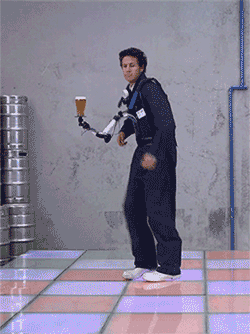
One of the selling points of the Apple Watch is that it can help make you less of an asshole. This was the thrust of the first major report about what the watch is like to wear, published before we knew what it looked like. It’s in Apple’s marketing. “You know how very often technology tends to inhibit rather than enable more nuanced, subtle communication?” Jony Ive asked in an interview with Vogue.
It is also at the core of the New York Times review.*
The effect was so powerful that people who’ve previously commented on my addiction to my smartphone started noticing a change in my behavior; my wife told me that I seemed to be getting lost in my phone less than in the past. She found that a blessing.
This reminded me of something I came across a few years ago. It’s an account of Sony Chairman Akio Morita testing out the first Walkman:

And an accompanying note, written a decade later in 1989, from writer Rebecca Lind (both collected from this book):

There seems to be something similar going on with the Apple Watch: an assumption not just that watches don’t do enough, or that other smartwatches are bad, or that an Apple Watch might allow people to do new things, but that the Apple Watch can, and must, fix the way people behave. It is, in this view, a tool for correcting problems created by the device to which it must be paired to operate. The Apple Watch is supposed to be a filter between you and your attention-suck hellworld smartphone; we will give it permission to intervene because it is slightly easier to look at while reducing our what’s-going-on-over-there-by-which-I-mean-in-my-pocket — by-which-I-mean-everywhere-else anxiety just enough to keep us sane. It provides a slight buzz, hopefully just enough, at a lower social cost. So it’s a little like… methadone?
Sony was worried that its portable stereo would be alienating. This turned out to be true. But the impulse to correct it was wrong: the thing that made it alienating was precisely the thing that made it good. The more compelling a gadget is, the more you use it, the more the people around you resent you for using it, the more they are pressured to use it themselves. (The fact that these devices are now all connected to each other only accelerates the effect.)
This is the closest thing we have to a law of portable gadgetry: the more annoying it is to the people around you, the “better” the concept. The more that using it makes you seem like an asshole to people who aren’t using it, the brighter its commercial prospects.
Consider an extreme example: Skip ahead past whatever replaces Google Glass** and the Oculus Rift to, say, mostly invisible lenses that take over for most of what we use phones for now (and, presumably, quite a bit more). It will certainly be tempting to suggest that the lens is less “distracting” then a phone or a tablet or a watch or a headset that blocks your view. And it will certainly help remedy the specific behaviors associated by previous devices. But just imagine how much of an asshole you’ll seem like to people in your physical vicinity for whom lensworld is inaccessible. You will be less present to non-participants than ever, even if your outward appearance and behavior lacks previously known asshole qualities. You will be two feet away and living on a different planet. (Though by then, maybe phone-level distraction will be normalized. Why prioritize people talking to you from two feet away over people talking to you from 100 miles? What the hell is your problem you stupid bad idiot? I’m talking to someone here, way over there.)
This is not to say that the Apple Watch won’t be successful, or that it will. But if it is, it probably won’t be for the reasons reviewers think, or even necessarily for the reason Apple thinks (it was designed by a self-described “group of people who love our watches,” which, what? Who??). It won’t be because it’s a better watch (boring, weird, WRONG) or because it makes non-Apple-watch users less irritable (anti-marketing). It will succeed if it can create new rude exclusionary worlds for its wearers (this is why I wouldn’t underrate the weird “Taptic” communications stuff).
It will succeed, in other words, to whatever extent it allows people to be assholes.
*The Verge review recognized a specific manner in which the Apple Watch can be more alienating than a phone: “It turns out that checking your Watch over and over again is a gesture that carries a lot of cultural weight. Eventually, Sonia asks me if I need to be somewhere else. We’re both embarrassed, and I’ve mostly just ignored everyone. This is a little too much future all at once.” The Bloomberg review, which was not terribly positive, might contain the strongest endorsement: “In some ways, it can be more distracting than your iPhone, and checking it can feel more offensive to people around you than pulling out your phone. The watch wants and needs you now, as its insistent taps make painfully clear.”
**Google Glass was extremely annoying to other people but also failed. Why? Because it was garbage. It suggested, from the outside, a rich and exclusive world without actually providing one to its wearer. It play-acted an asshole future without actually creating one.
The Lies I Will Tell My Child

When I was in sixth grade, a new friend brought me to her house for the first time. There, in her sun-filled kitchen, she proceeded to tell me that when she was little, her mom had told her that babies were grown in flower pots. The parents planted seeds, watered and fertilized them, and they grew there, presumably, little sprouts on the windowsill. I knew better than that, but I didn’t press her at the time for facts. “Do you think that’s an accurate representation now, of what happens?”
I scoffed at this account — not that anyone might believe it, but that someone might LIE to their child. Why would they lie? Why tell a child that God exists when I know that it doesn’t? Or the Easter Bunny or Santa Claus? I would never make up such things: flower pots! My child would hear the unvarnished truth. I was too young, and too childless, to know that maybe sometimes, creative shortcuts — lies — are the best ways to explain complicated processes: birth, life, death.
My husband and I love holidays. Because he is Jewish, and I am (was?) Catholic, we celebrate all of the holidays that come in our way: Passover, Hanukkah, Christmas. We crack out the menorah; we decorate the tree every year. So we knew that we wanted our daughter to have access to the full range of holidays; I have come to love his family’s giant Passovers, and he looks forward to the tree and the gifts of Christmas. Two months before Zelda was born, we celebrated our last Christmas alone: “We won’t have Santa Claus for her, right?” “No, of course not!” “Right, why would we lie to her?” When we consulted our friends, we got varied opinions. “What will she think when all the other kids have Santa Claus?” “You don’t want her to run around telling her friends that Santa Claus isn’t real, do you?” No, we don’t. But we also don’t want to make up a story, either.
I don’t remember believing in Santa Claus, though my parents certainly put in the effort. Much like my relationship to God, I am and have always been generally disinclined to believe in epic tales of heroic men. What I remember is pretending that I believed in Santa Claus, because I didn’t want my parents to be sad. They seemed so into the whole thing I didn’t want to let them down. And then, when I told my mother what I suspected, she confirmed it: She was Santa Claus. I spent the next several years helping her wrap presents late at night while my younger brothers slept. It became something I looked forward to: a secret time alone with my mother and father and older brother, making a special display of “Santa Claus,” for the two youngest, the two believers. I had my best Christmases after I told my parents the truth.
There is beauty in the truth. And it’s usually small and simple. My friend Jenna recently commented on the loveliness of watching Zelda drink seltzer. The bubbles are still a surprise to her, and she savors them. She stumbles through life relishing small details, picking at a leaf, examining a piece of granola for five minutes at a time. She sometimes sits alone in a sunny corner now, mumbling secret things just to herself. What is it like to have eyes that see everything this way? To live in wonder but also in acceptance? She is only just learning to act surprised at things, likely because I love to yell “Ahhhh!” when something new happens, or “Boo!” when I pop out from around the corner. She acts out her surprise, for me. It isn’t natural to her: What is natural to her, when encountering a new thing for the first time, is casual but full enjoyment, even of something less than pleasurable. Hot water on her hands is met with the same instinct to investigate as a piece of cake. She seeks the truth, and she finds it in every corner. There will be time enough for lies. She is already learning to manipulate — to fake cries and to pretend she isn’t tired, even though she can barely keep her eyes open. She will lie to me one day, I know, probably as soon as she has the language skills to accomplish the task. I hope that it’s before I lie to her.
Earlier today, Zelda and I planted broccoli seeds (her favorite vegetable) with our bare hands into big copper pots to grow outside her bedroom window. I helped her pat her little hands over the seeds, and she giggled as I poured water over them. In the next few weeks we’ll go out every day to watch her plants grow large and edible. We’ll water them and protect them from the deer with nets and love. I’ve grown plants all my adult life but I’ve never hoped for one to survive as much as I do Zelda’s broccoli.
My friend, whose mother loved gardening and told her that babies were grown in pots, owns a flower shop in San Francisco. Her own daughter is getting ready to graduate from high school. There is some truth to that story, maybe. We grow, like flowers — or broccoli — in pots.
Stan Freberg, 1926-2015
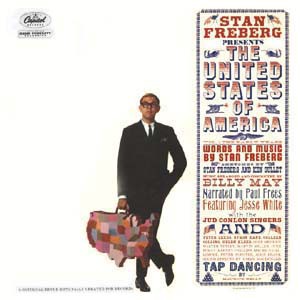
Stan Freberg, who died yesterday in Santa Monica, is one of those artists whose influence is pervasive to the point of being nearly invisible, having been so fully absorbed into the culture it helped create that the genius and daring of the original material is obscured by everything built upon its brilliance. Still, Stan Freberg Presents the United States of America Volume One: The Early Years remains, more than half a century after its release, one of the funniest works of all time. If you have not listened to it I envy you the cackles of pleasure you will experience when you do, which is something you should make plans to do immediately. (The sequel, which came later, is not so good and best to be avoided, and I only mention that here because I do not want you to listen to anything that might detract from the sheer delight of the original.) Freberg was 88.
